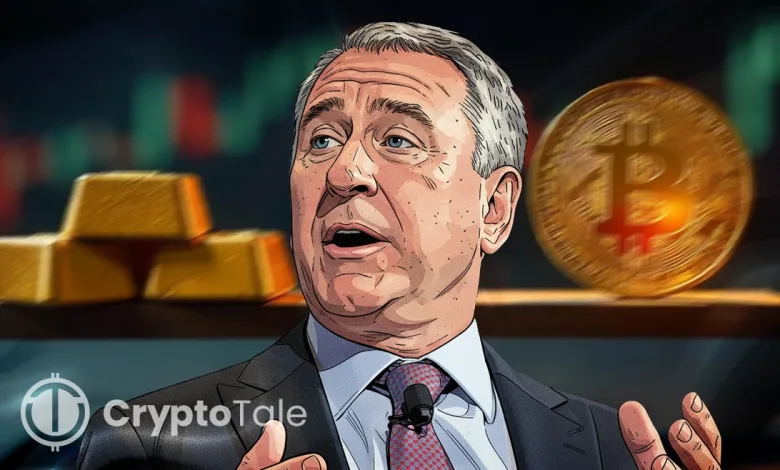Ken Griffin Warns as Gold and Bitcoin Challenge Dollar Power

- Global investors are moving from the dollar to gold and Bitcoin for safety and growth.
- Griffin says rising US debt and weak fiscal trust fuel this new investment direction.
- Bitcoin and gold are now seen as secure shelters against currency and inflation risk.
Billionaire investor Ken Griffin has reignited discussion over the stability of the U.S. dollar, warning that global markets are tilting toward what he calls a “debasement trade.” As confidence in the US dollar declines, institutional and retail investors are reallocating their investments to gold, silver, and Bitcoin. Griffin’s remarks point to a more profound transformation where inflation pressures, rising debt, and fading fiscal trust are pushing capital toward hard assets.
Investors Move to De-Dollarize Portfolios
In an interview with Bloomberg’s Francine Lacqua on Monday, the Citadel founder said investors are viewing gold as a safer asset than the U.S. dollar—a trend he described as “really concerning.” Griffin noted, “We’re seeing substantial asset inflation away from the dollar as people are looking for ways to effectively de-dollarize or de-risk their portfolios vis-a-vis U.S. sovereign risk.”
His comments came as the precious metal surged to a record high amid continued government gridlock and expectations of potential rate cuts. This year alone, gold, silver, and Bitcoin have gained as investors hedge against inflation and fiscal uncertainty. The shift, described as the “debasement trade,” captures a move from fiat-based assets toward alternatives seen as more resistant to monetary erosion.
Griffin added that the U.S. economy is experiencing fiscal and monetary stimulus similar to recession-era conditions. “We’re definitely on a bit of a sugar high in the U.S. economy right now,” he said. The remarks were delivered at a Citadel Securities conference in Manhattan, where the firm hosted institutional clients, including asset managers, banks, and hedge funds.
Global Push Toward Hard Assets
The issues raised by Griffin highlight a growing concern about the sustainability of the U.S. dollar’s dominance. He cited the increasing fiscal deficit of the country, the extreme monetary policies, and the growing national debt as some of the indicators of future currency debasement. With the decline in the dollar’s popularity, investors are reevaluating the concept of safety in 2025 and beyond.
Central banks across the globe are examining how they can decrease dependency on the dollar. Most of them have augmented gold reserves or have resorted to alternative systems of settlement. Dollar volatility and geopolitical risk have become reasons why emerging economies, especially those in Asia and the Middle East, view the need to diversify their reserve holdings. Such initiatives demonstrate a paradigm change in the international financial trust.
The action of Bitcoin climbing above $126,000 has solidified its rise to the status of a macro hedge among institutional allocators. Analysts say Bitcoin’s fixed supply and decentralized network position it as a modern complement to gold. Together, these assets are forming a dual hedge against sovereign and inflationary risks.
Related: Investors Turn to Bitcoin and Gold as U.S. Debt Nears $38T
Structural Repricing of Global Risk
Provided that Griffin is correct in his warning, financial markets may be undergoing a structural repricing of risk. The capital that was previously preferred for equities or dollar-based assets can now be shifted to instruments perceived as more resilient in uncertain conditions. This replication may increase volatility in traditional markets and alter global liquidity patterns.
Griffin believes that the only way to restore credibility in fiat systems is through fiscal discipline, transparency, and monetary restraint. In the absence of these, he cautioned, assets such as Bitcoin and gold could continue to absorb capital at an alarming rate, slowly undermining the position of conventional reserve currencies.





